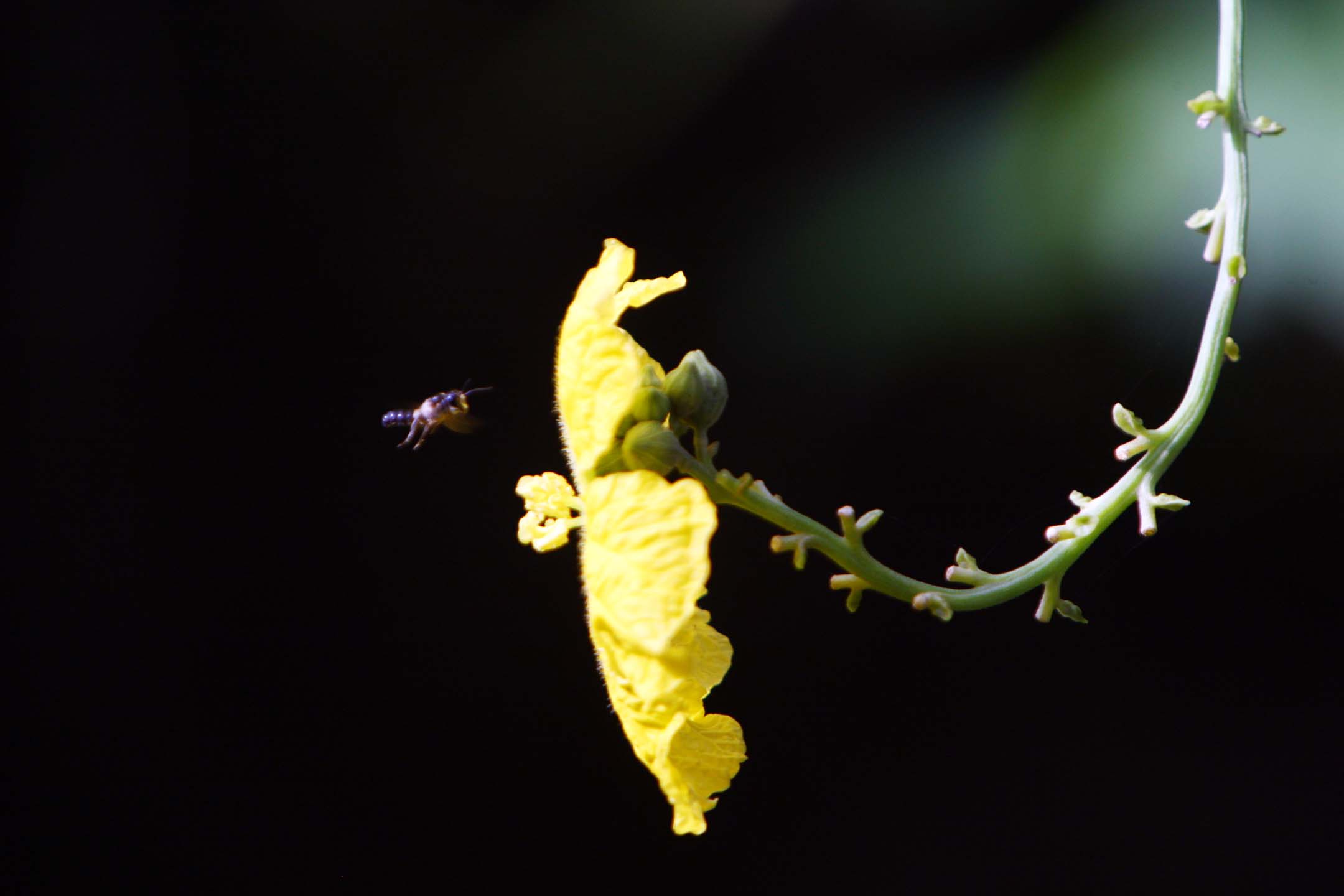Bee and Flower: A Morning Encounter
Text and Photo by Ashok Karan
[ashokkaran.blogspot.com]
While strolling through my colony once on a bright morning, I noticed a vibrant yellow flower of the green gourd vine, glowing beautifully under the soft sun. As I observed closely, a tiny honeybee caught my attention, gracefully hovering to sip nectar. Luckily, I had my beloved camera with a long zoom lens by my side. Taking advantage of the moment, I carefully focused, composed the frame, and adjusted the tricky exposure by bracketing the shots — finally selecting the best one.

When you view the photo, your eyes will naturally be drawn to the tiny honeybee, even though it occupies barely 5% of the canvas. I intentionally used a high shutter speed to freeze the bee mid-hover, capturing its delicate motion in perfect clarity.
The bee in the photo is a female worker bee, the true powerhouse of the hive. Worker bees are responsible for nearly all tasks crucial to their colony’s survival, including:

- Nurturing the young: Young worker bees, known as nurse bees, feed and care for developing larvae, secreting royal jelly for the queen and other bees.
- Maintaining the hive: They clean, remove debris, build and repair honeycombs, and regulate the hive’s temperature and humidity.
- Foraging: Older workers gather nectar, pollen, water, and propolis to nourish the colony and produce honey.
- Defending the hive: Some serve as guards at the hive entrance, courageously protecting the colony even at the cost of their lives.
- Communication: Workers perform the famous “waggle dance” to share information about food sources and hive conditions.
- Queen care: Select workers attend to the queen, grooming and feeding her.
In contrast, male bees — called drones — have only one purpose: to mate with a queen. They do not forage, clean, or defend the hive. In colonies of 20,000 to 50,000 bees, only about 100 drones are present. During times of food scarcity, drones are often expelled from the hive, as they contribute little to the colony’s survival.
Beekeeping offers immense benefits — for people and the planet. It provides natural honey, beeswax, and other products, while promoting vital pollination that supports global food security. Beekeeping can also offer a meaningful source of income, strengthen local communities, and foster a deeper connection with nature.
However, successful beekeeping requires careful management: ample open spaces, access to diverse flowering plants, and a mindful approach to risks like bee stings. Practicing sustainable beekeeping ensures that we protect these essential pollinators and the environment they sustain.
In the featured images, a tiny honeybee hovers delicately over a glowing yellow flower — a small, beautiful reminder of the intricate world buzzing around us.
🌼🐝
#BeePhotography #NatureLovers #MorningWalks #BeeLife #Pollinators #SaveTheBees #Beekeeping #NaturePhotography #WildlifePhotography #GreenGourd #BeeAndFlower #SustainableLiving #EnvironmentalAwareness #SupportPollinators #AshokKaranPhotography


Leave a Reply